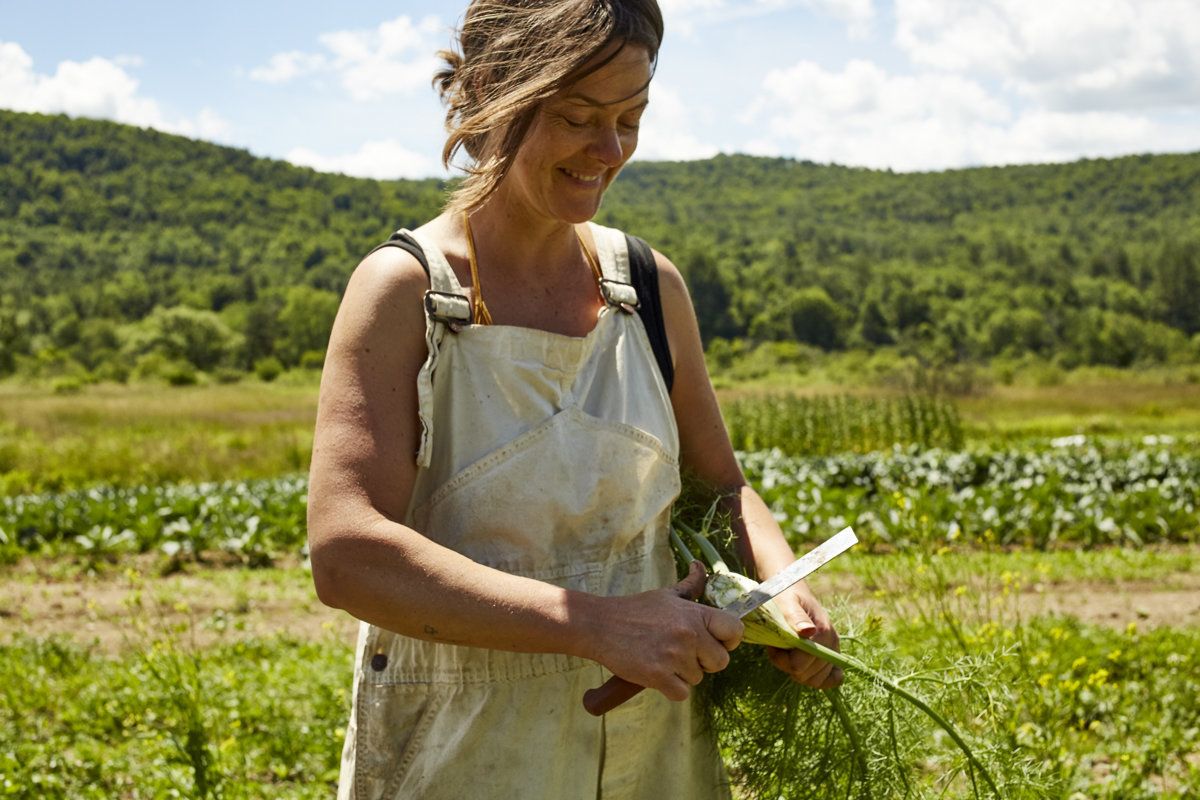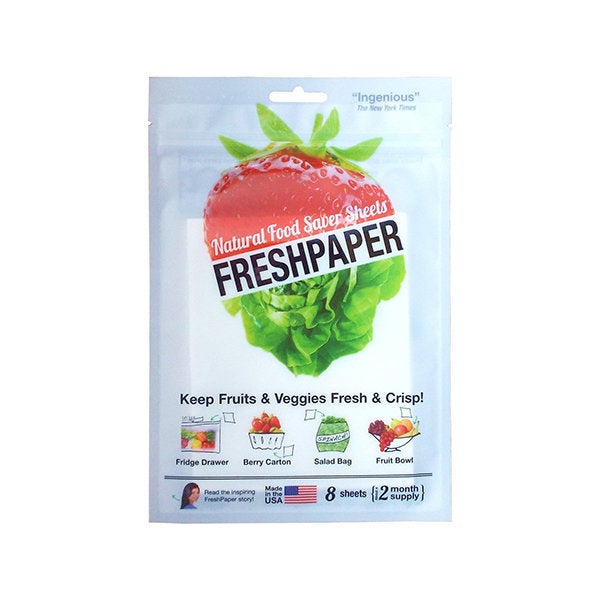Every day, Tianna Kennedy walks through the crops that blanket the 70-acre expanse of idyllic farmland she helms in New York’s Northern Catskill region.
Kennedy grows hundreds of varieties of organic vegetables and herbs. As she walks, she closely examines her collards. She used to grow more of them, but her customers just weren’t buying them ― in the realm of greens, it seems kale is still king. So she’s down to a quarter-bed of collards.
She continues on to her fava beans. Kennedy’s indifferent to them, but many of the 15 different chefs she counts among her customers just can’t get enough, even as she doubles her production of them again and again.
Thus is the daily push and pull of business for Star Route Farm, which Kennedy and her farm partner, Walter Riesen, established two years ago.
In addition to supplying restaurants with produce, Kennedy operates a 150-member community-supported agriculture group and takes an unusual “harvest-to-order” approach to her business. Plantings are carefully planned based on chef and CSA customer feedback and observations from previous growing seasons, in an effort to more accurately predict what customers will want, and thus reduce waste.
While food waste has suddenly become a popular topic in the food and farming worlds, for Kennedy it’s simply about survival amid alarmingly tight margins.
“There’s this myth that farms will always exist and farmers will always exist,” she said. “A lot of people’s lives are on the line, a lot of rural economies are on the line. Shopping from your local farmers and local farmers’ markets is not just cute. It’s keeping that economy alive.”
Kennedy is part of a new breed of farmers working hard to avoid food waste in an industry with a reputation for a whole lot of it.
“Shopping from your local farmers and local farmers’ markets is not just cute. It’s keeping that economy alive.”
- Tianna Kennedy, organic vegetable farmer
According to the best available estimates, about 20 percent of the fruits and vegetables the agricultural industry grows don’t even make it off the farm. And that number doesn’t include food loss that occurs due to handling, storage, processing or packaging issues.
All that waste adds up. According to Feeding America estimates, at least 6 billion pounds of fresh produce goes either unharvested or unsold each year in the U.S.
Of course, producing just the right amount of food has been a challenge for farmers for as long as there have been farms. And there will always be factors beyond any one person’s control that contribute to food waste at the individual farm level: weather, pests, disease, labor shortages, changes in market price.
Still, there is a growing movement committed to getting creative and doing something about it. And a lot of farmers, large and small, are on board.
Ugly Food
For larger farming operations in particular, pressure from retailers to deliver produce that looks a certain way often leads directly to surpluses.
Most retailers adhere to strict cosmetic standards put in place by the U.S. Department of Agriculture to determine the acceptable size, shape and color of the produce they sell. The USDA describes these standards as a “common ‘language’” that makes it easier to do business.
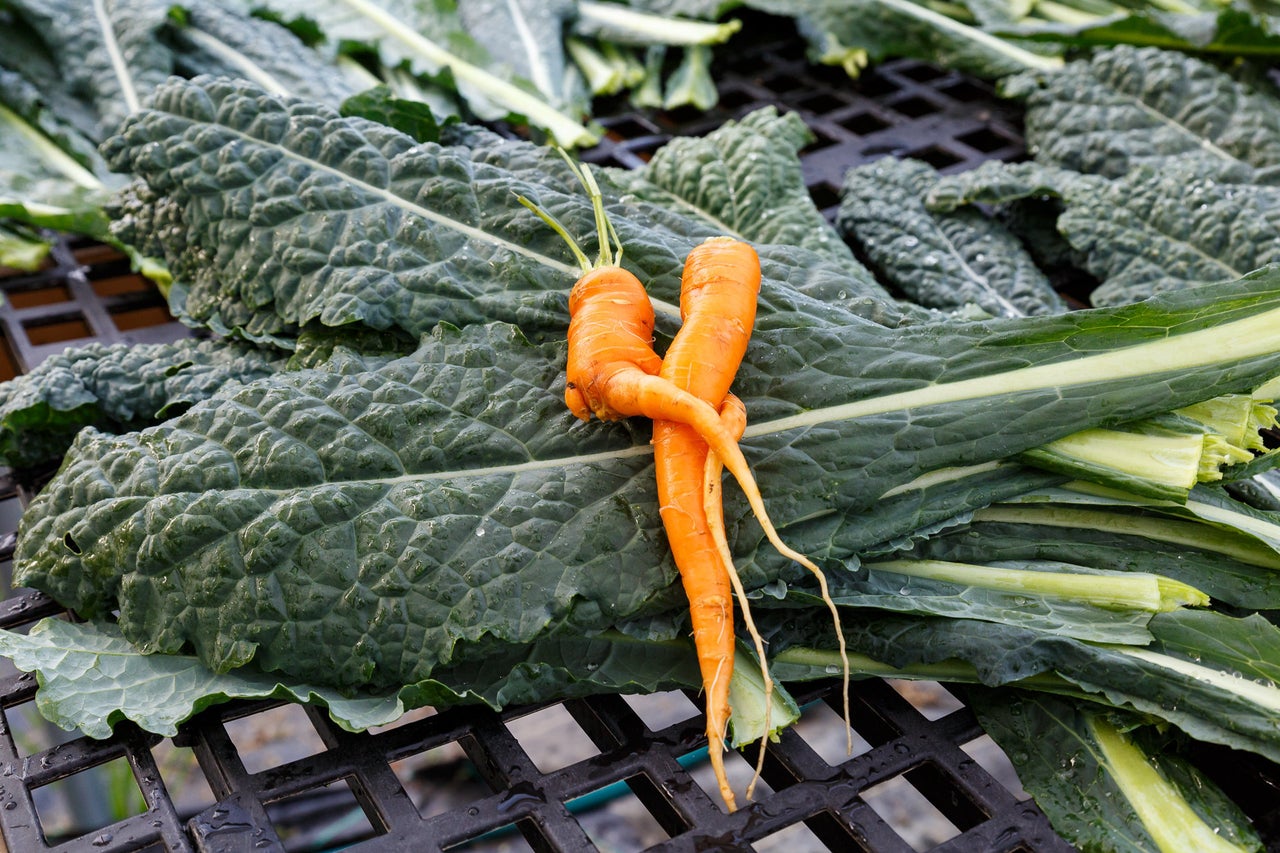
The result, though, is a lot of so-called imperfect or “ugly” produce that farmers don’t have a market for. Sometimes it’s composted or fed to livestock. Other times it winds up in landfills. Often it doesn’t get eaten at all ― not by humans, and not by animals either.
Farmers aren’t to blame for this waste, says Jordan Figueiredo, who leads the popular @UglyFruitAndVeg Twitter campaign aimed at getting major retailers like Walmart and Whole Foods to sell “ugly” produce in their stores.
“This is not the farmers’ fault in most cases,” Figueiredo said. “They have to produce so much and can’t miss their orders for how much they’re supposed to have. So they overproduce. There’s always going to be this extra produce they have.”
Most farmers fear pushing back against the expectations of massive buyers like Walmart, says Dominika Jarosz, a campaign manager at the anti-waste nonprofit Feedback. And so the cycle repeats.
“Farmers don’t want to jeopardize any relationships they have with retailers,” Jarosz said, “given the power they have in the current structure of our food system.”
Too Much Food
Many farmers, when faced with a surplus ― whether because of a bumper crop, an order rejected due to “uglies,” or some other reason ― choose to donate their extras to food banks, soup kitchens or other charity groups.
The decision to do so is a no-brainer to Dana Boyle, co-owner of the Garner’s Produce farm and market in Warsaw, Virginia.
“It’s just as simple as we have it and people need it,” Boyle told The Huffington Post.
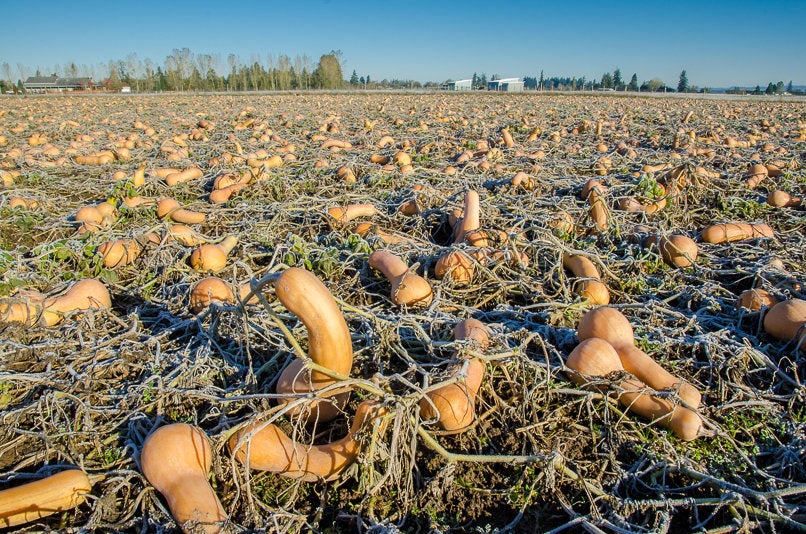
Food recovery or gleaning organizations often step in to collect and redistribute the would-be waste, relying on volunteers to help harvest produce from farmers who don’t have the labor available even to get the surplus fruits and vegetables off the field, much less onto a vehicle and to a food bank.
Elise Bauman heads up one of the nation’s largest such organizations, Salem Harvest, headquartered about 50 miles south of Portland, Oregon.
Founded in 2010, the group coordinates some 3,000 volunteers and works with about 42 farms in the Willamette Valley region.
“It’s crazy the amount of food being wasted on the outskirts of town and in rural parts of town,” Bauman said. “And then in the middle of the city, you see people who are hungry.”
Groups like Bauman’s are helping to bridge that gap.
Last year, a week before Thanksgiving, Bauman was alerted to a large surplus of butternut squash on an Oregon farm that was going to go to waste. After rallying 100 volunteers, Salem Harvest harvested 130,000 pounds of squash — 18 full truckloads — in two days. The squash was delivered to food banks throughout the region.
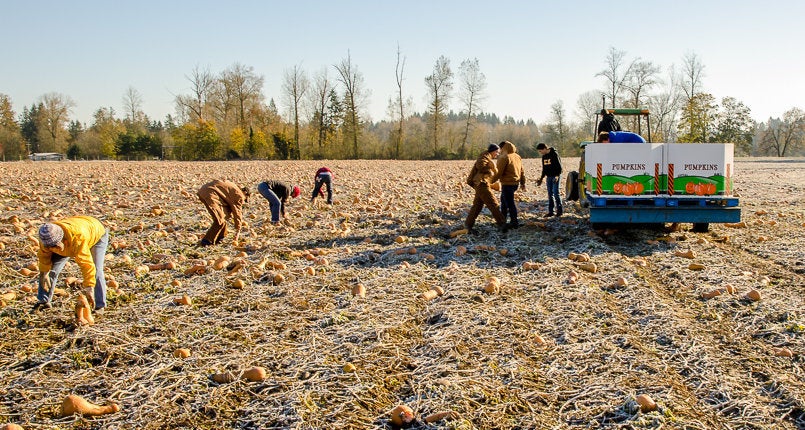
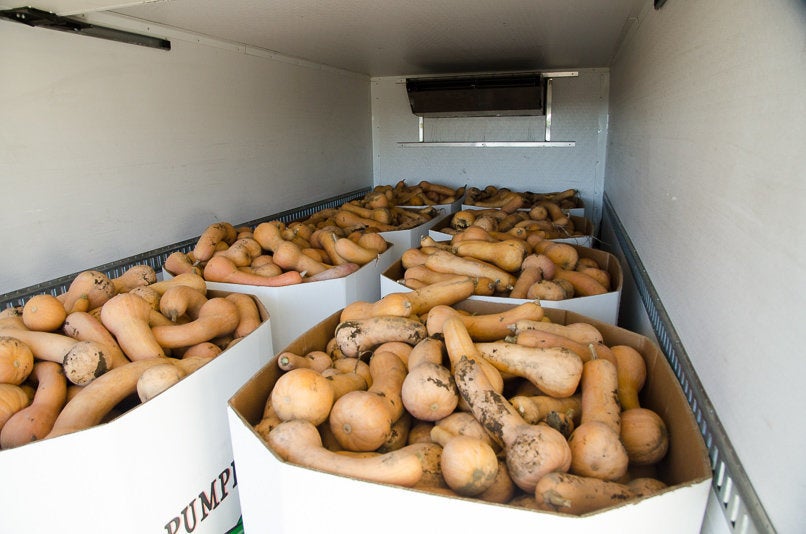
Recovering Waste
Similar programs are also expanding under the purview of food banks themselves. In Ohio, Erin Wright oversees the Ohio Association of Food Banks’ unique Agricultural Clearance Program, which serves as a direct link between farmers with excess produce and food banks that provide food to hungry Ohioans.
Last year, the Ohio program distributed more than 40 million pounds of food, for which the farmers are reimbursed roughly 20 cents per pound. It’s a win all around.
“It helps them out, it helps us out, it helps the clients out and helps sustainability across the board for everyone,” Wright told HuffPost.
Many states have similar programs. Others, including Kentucky and Michigan, are looking at creating or expanding initiatives based on the Ohio model.
There are two major hurdles preventing many of these programs from scaling up, however. One is funding. The other is the logistical challenge inherent in getting produce from farms ― often located in remote, rural areas ― to the places it’s needed.
Often, the funding available isn’t anything close to enough, Dana Gunders, staff scientist of the Natural Resources Defense Council’s food and agricultural program, told HuffPost.
“Food recovery is chronically underfunded at every step,” Gunders said.
“Farmers can only donate so much without going broke.”
- Jordan Figueiredo, anti-food waste activist
The Ohio program is a rare exception. It receives $7.25 million in funding through a grant from the state legislature. But many smaller programs are unable to obtain the capital they need.
Further complicating matters is the fact that many states don’t offer tax credits to farmers who donate their excess produce ― which means a lot of them simply can’t afford to do it.
Even in states that do offer credits to incentivize donations, including California and Oregon, the money typically only covers any additional labor costs farmers incur by donating — so the best they can expect is to break even. Currently, there are no federal tax credits available for farmer-donors.
“Farmers can only donate so much without going broke,” Figueiredo said. “A lot of times they just leave stuff in the field, because they can’t afford to pick it just to donate it.”
So, What’s The Fix?
Some in the private sector believe they have the solution. Over the past several years, apps like Love Food Hate Waste, Rainbow, Waste No Food and Food Cowboy have surfaced that aim to use technology to connect farmers (and other people with excess produce) with those who wish to get their hands on it.

Another promising platform, the San Francisco-based Full Harvest, debuted earlier this year. The platform connects farmers who have surplus or imperfect produce with food companies that need fruits and vegetables and don’t much care what they look like ― companies like juice manufacturers and other businesses that use produce as ingredients instead of the main product.
The demand has been very high, Full Harvest CEO Christine Moseley told HuffPost. Moseley said they’ve sold over 100,000 pounds of produce to food companies over the course of the last few months, and they’re aiming to ship over a million pounds of produce by the end of the year. She is confident their growth will only continue.
“It’s just a matter of time before people start realizing this is something that has to be done and we’ll be the platform [farmers will be] able to sell their product through,” Moseley said. “So far it’s working.”
Still, there’s a long way for the farm industry to go if it wants to help the USDA and the Environmental Protection Agency meet their joint goal of halving U.S. food waste by 2030.
Secretary of Agriculture Tom Vilsack is confident that both the agricultural industry and the nation as a whole are on track to hit that ambitious target. In an interview with HuffPost, Vilsack pointed to innovations like WholeVine Products’ flour derived from grape seeds and the increased use of automatic fruit-picking machines that can harvest crops more efficiently.
The USDA has also expanded funding for its farm storage facility loan program and its value-added producer grant program in an effort to help farmers reduce their food waste. But despite these encouraging signs, Vilsack acknowledged that change always takes time.
“It’s not going to happen overnight,” Vilsack said. “I don’t think you’re going to have a situation where every American at the same time is going to come to the conclusion that [they] ought to be focused on this issue.”
Other experts agree ― but there’s a sense of optimism in the air. Gunders is particularly cheered by the amount of mostly bipartisan legislation, like the bills Rep. Chellie Penigree (D-Maine) has introduced, coming out of Congress. She believes the momentum is building.
“This is picking up speed really quickly,” Gunders said, “and that gives me a lot of hope.”
It’s On All Of Us
In the community of Wayne, Illinois, in Chicago’s western suburbs, Ellen Kamps and Jeff Hughes, the team behind Foxtrot Organic Farm, are also feeling hopeful. Their vision of a solution to food waste involves the entire community, and the food decisions we make every day.
Foxtrot holds a “transplant” sale each year where prospective gardeners can get a head start on the growing process. It’s part of the farmers’ effort to help people feel more connected to the food they eat ― and to gain a better appreciation of what the growing process is really like.
“It really puts the waste into perspective,” Hughes told HuffPost. “When you find out what might go to waste and how much effort is required to create the food, you become a lot more aware of and grateful for the food you see in the store. You know what went into it.”
Kamps and Hughes also take waste into account when choosing what produce to grow on their farm.
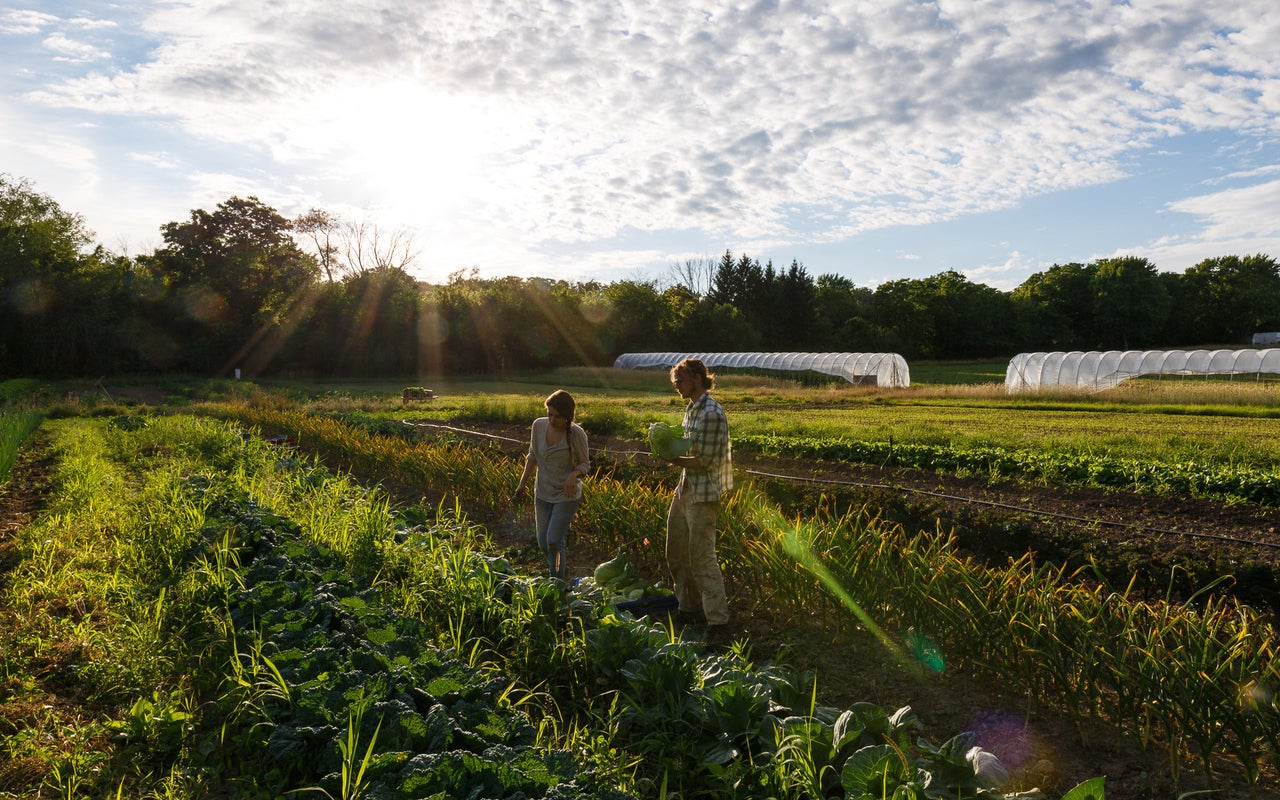
At their farm stand and their market booths, they sell unusual varieties of produce that are easier for home cooks to work with ― and more likely to actually get cooked up and eaten. Among them are a Romanian red garlic with a large clove size that’s easier to peel and a Delicata winter squash that was bred to have a softer skin, so you don’t need to peel it before cooking.
“Part of this is on the farmers’ end to make food and select varieties that are more convenient for people to cook with,” Hughes said. “People lead busy lives these days. So it’s a big help to make [things] easier for them.”
Still, experts say, food waste won’t be reduced in a meaningful, sustainable way without a broader cultural shift. And in that sense, says Figueiredo, the @UglyFruitAndVeg ringleader, there’s yet a long way to go.
“From a cultural standpoint, it’s about valuing food,” he said. “We don’t really value food enough to not waste it so much. But we’re at the very beginnings of progress.”
The responsibility, according to Figueiredo, ultimately falls on all of us collectively — along all points of the food supply chain — to push for change.
“This is a matter of us deciding if we want to do this,” he said.
More stories like this:
- This Walmart Worker Threw Away Food On The Job, Then Went Home Hungry
- A Whole New Kind Of Grocery Store Is Coming To The U.S.
- This Guy Spends $2.75 A Year On Food And Eats Like A King
- I Ate Expired Food For A Week And Didn’t Die
- The Food Your Grocery Store Doesn’t Want You To See
- Meat Eaters Should Have Been Listening To Vegetarians All Along
